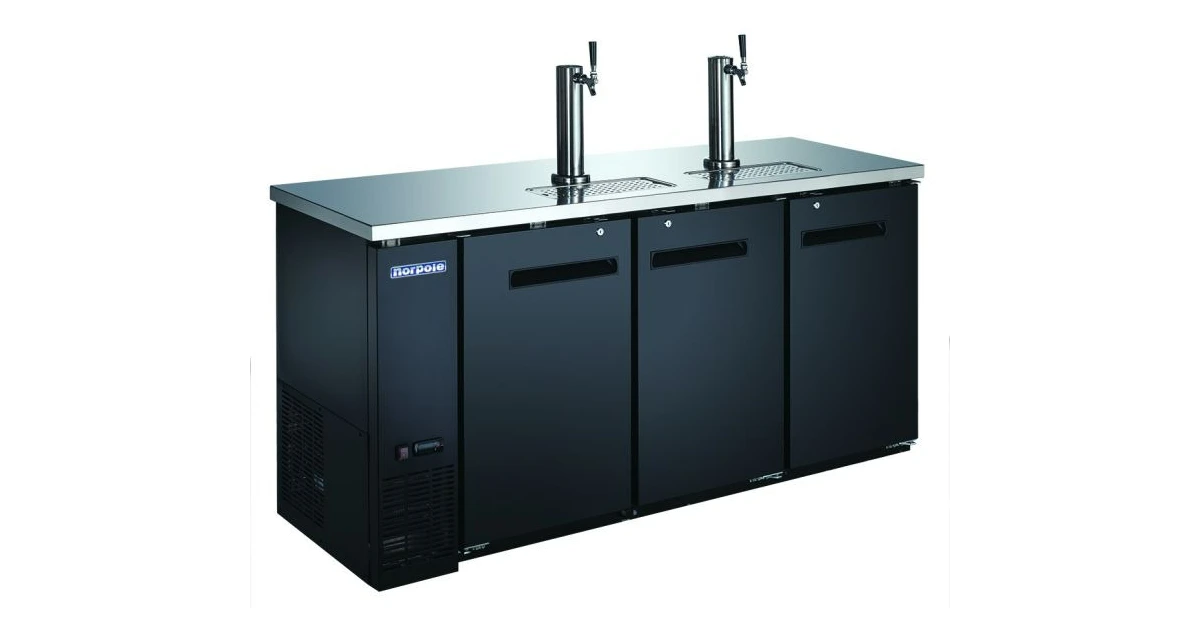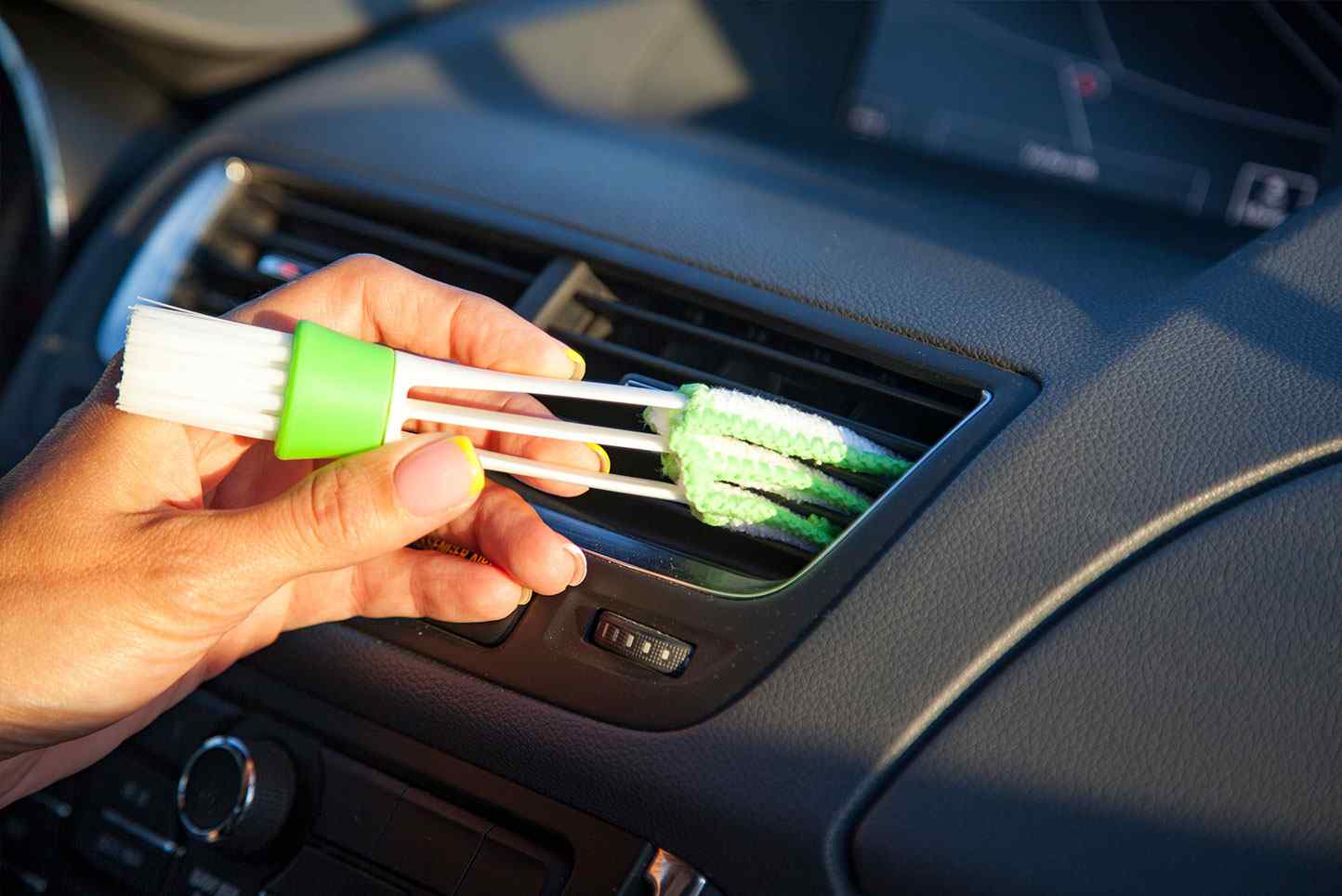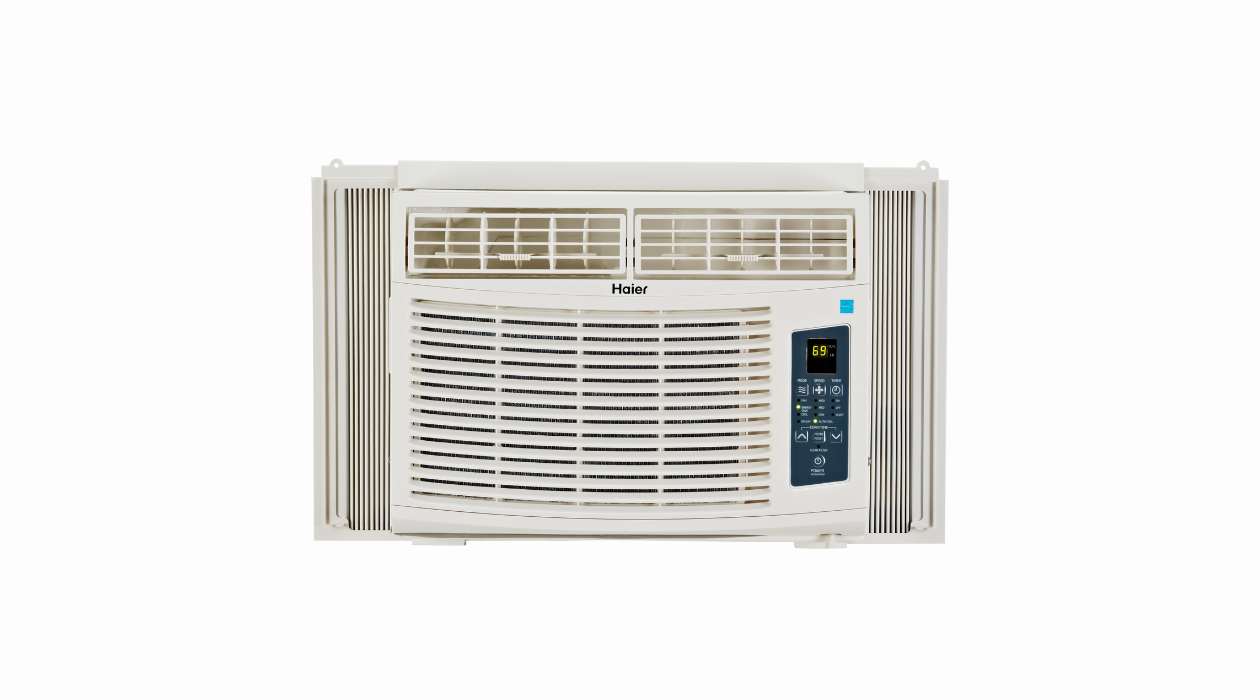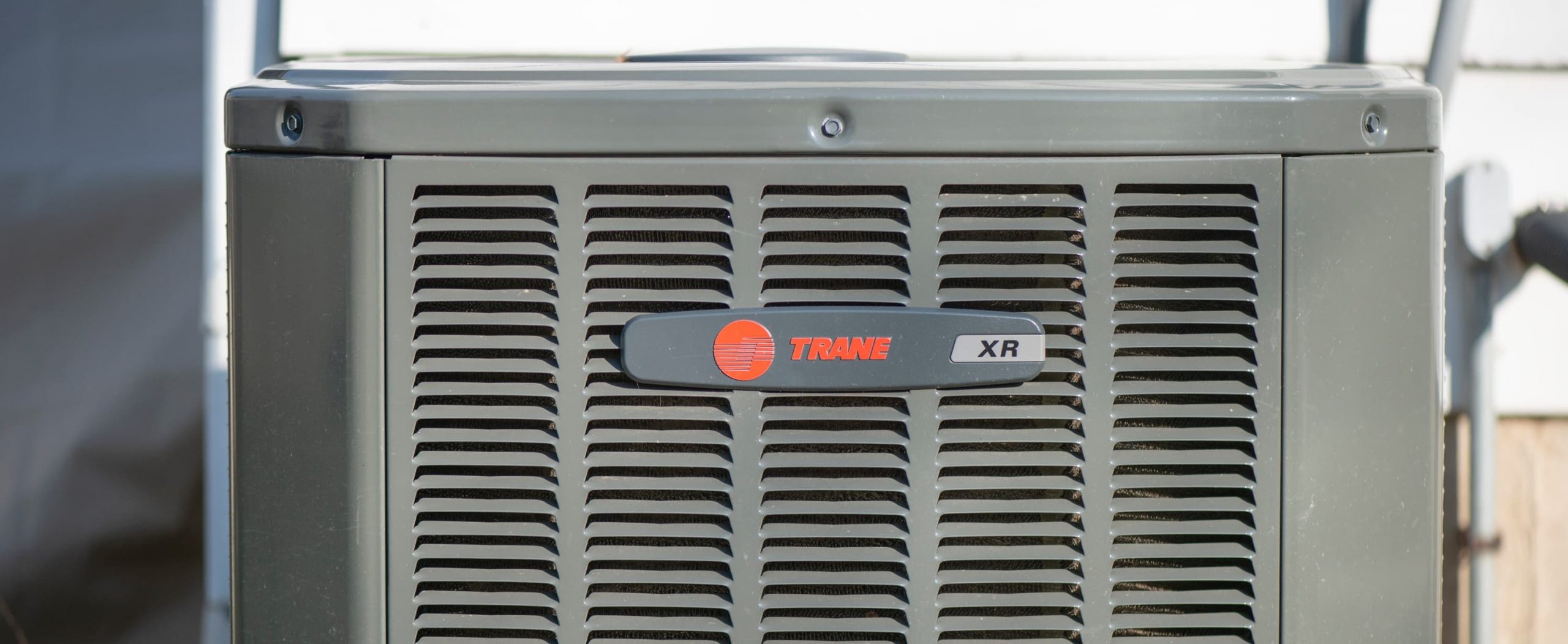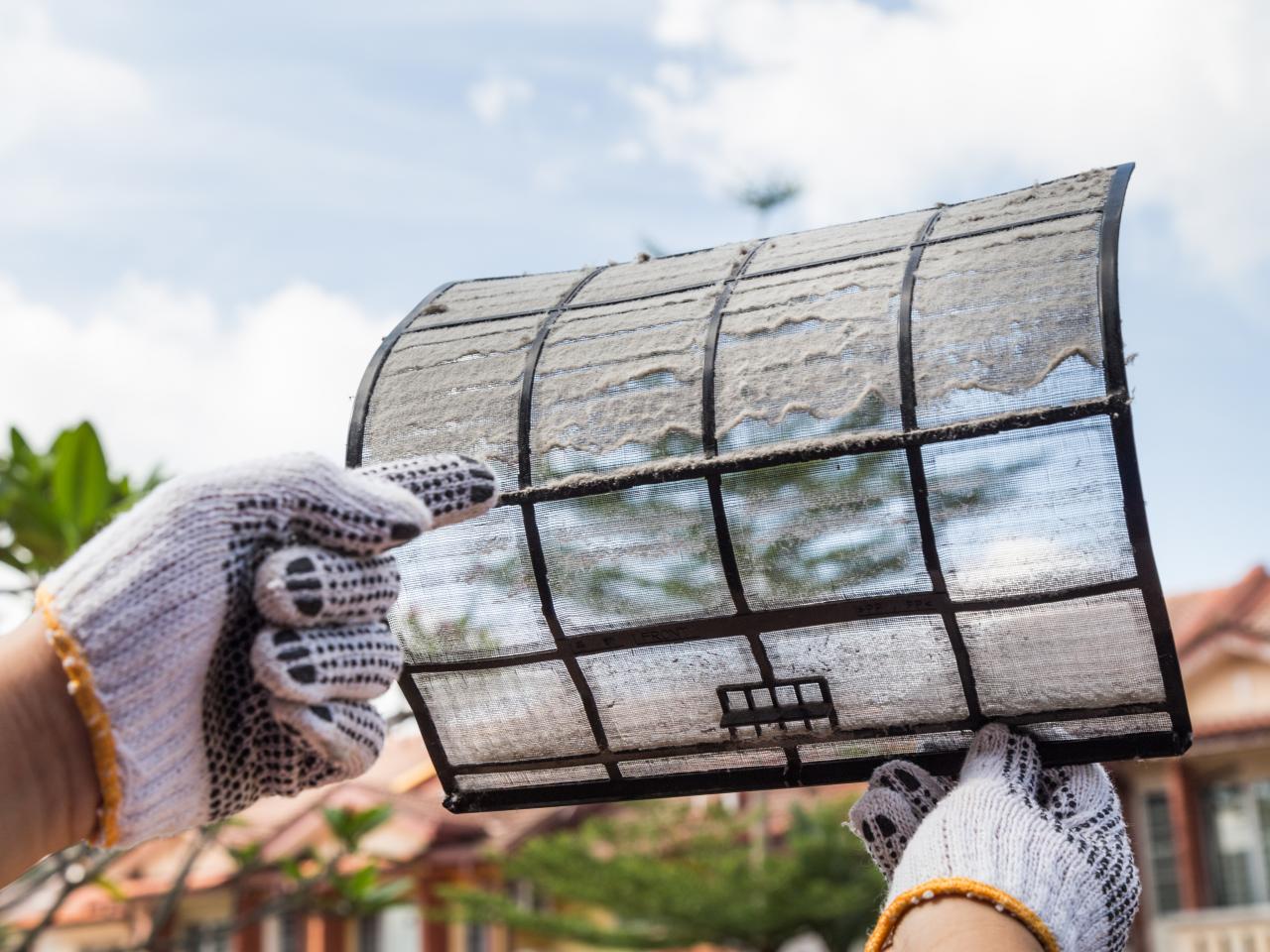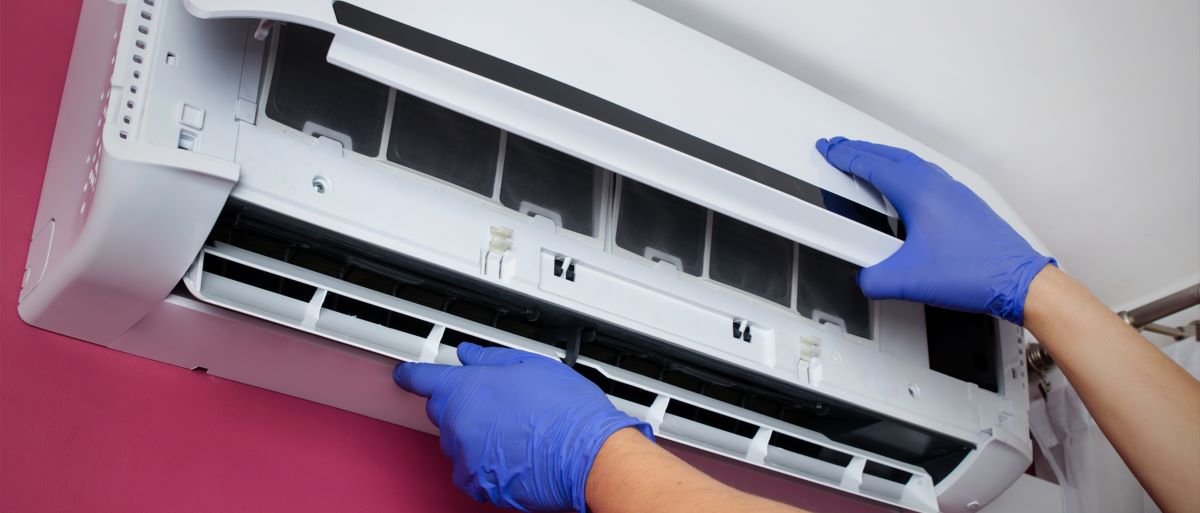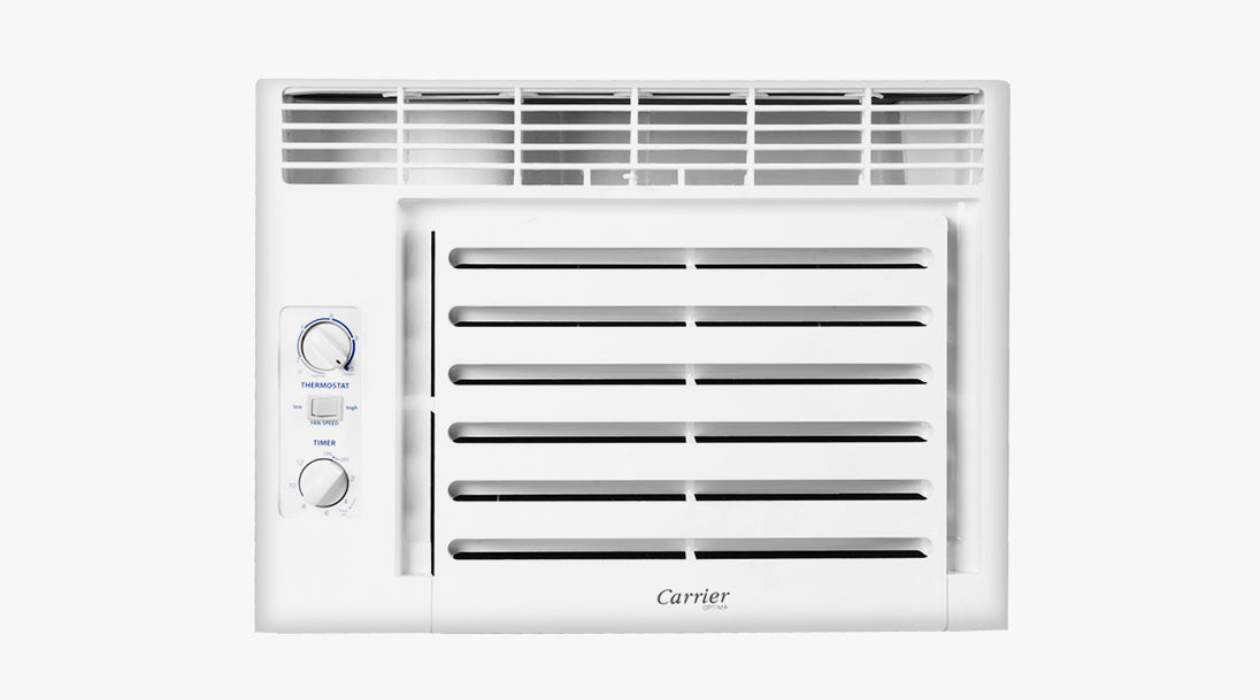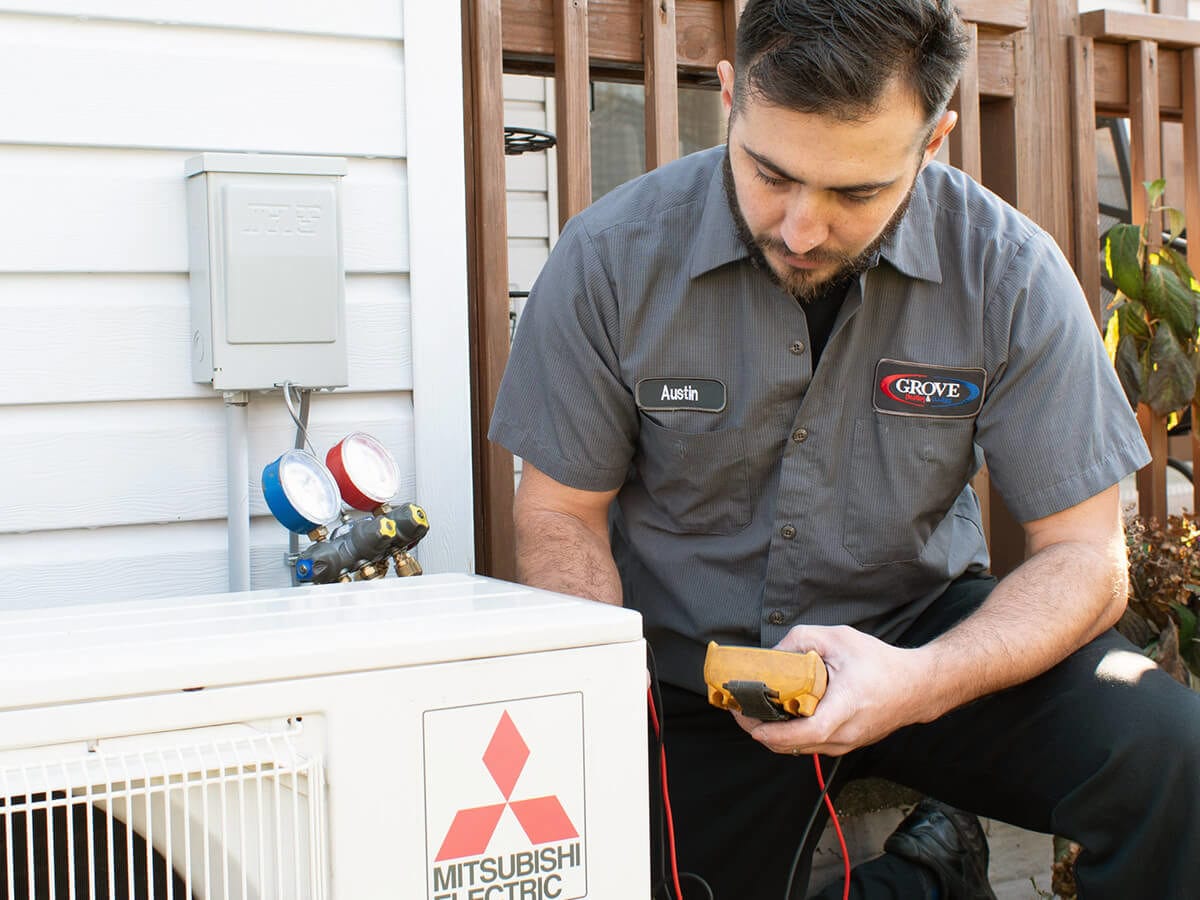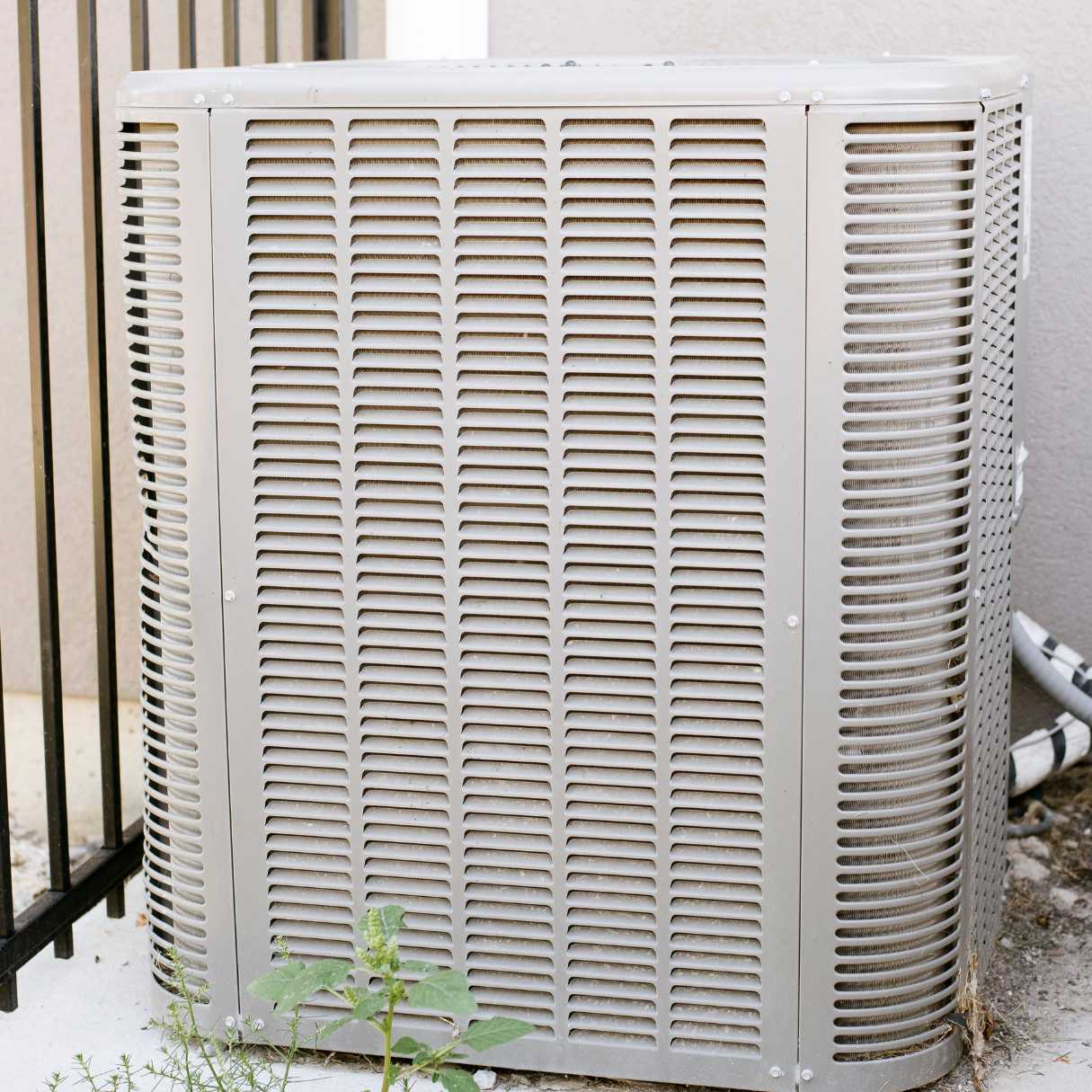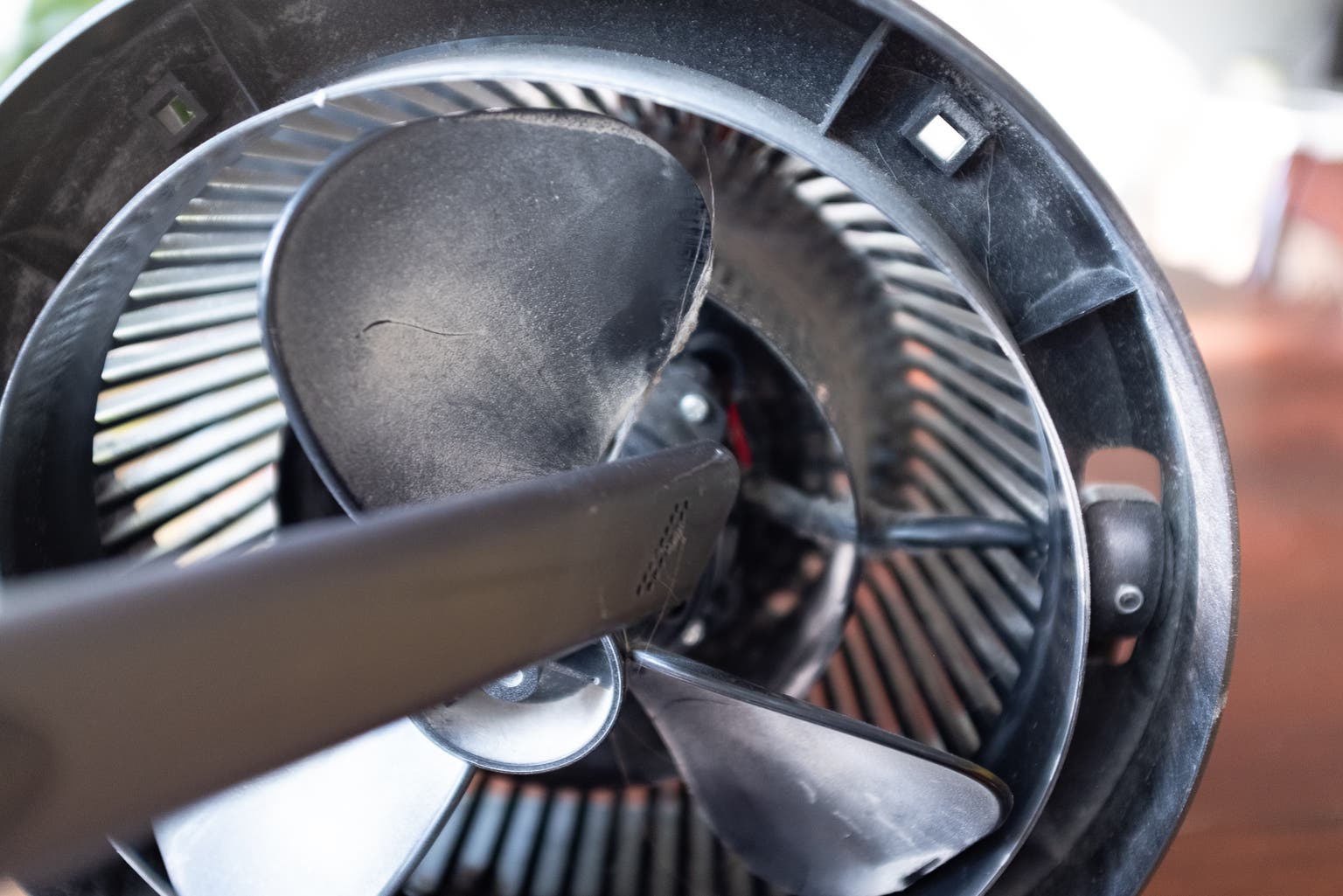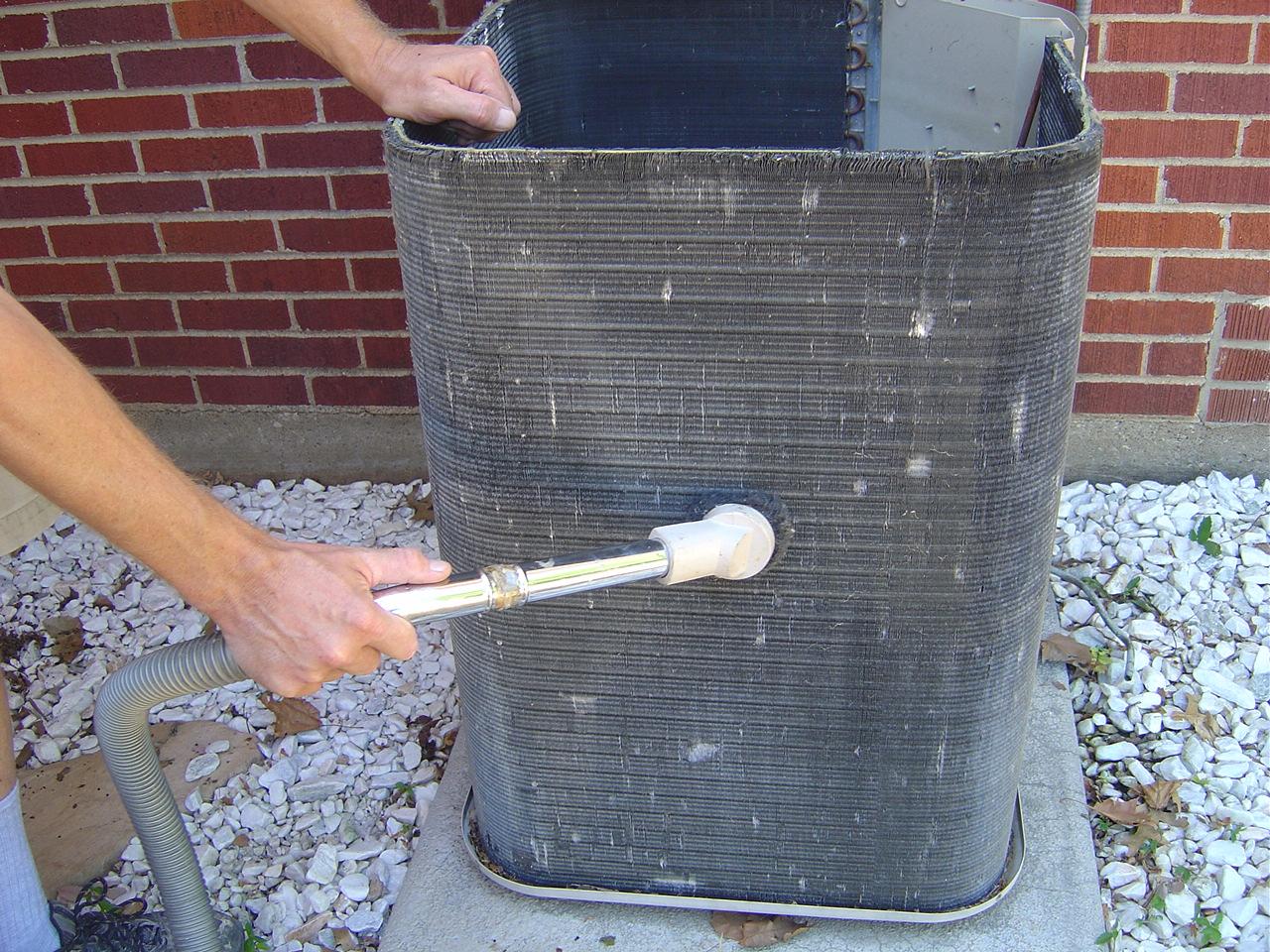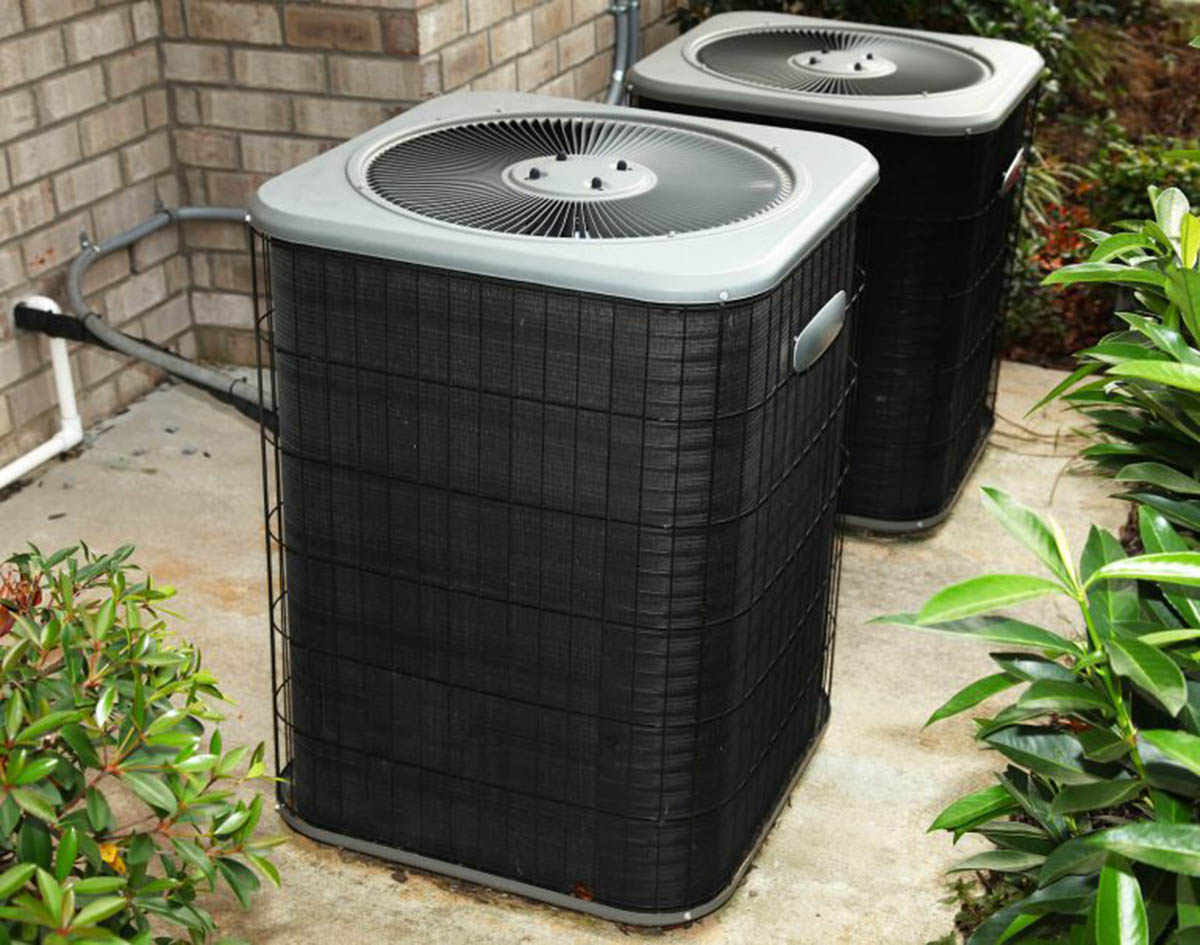Home>Home Maintenance>How To Clean The Condenser Coils Of An Air Conditioner
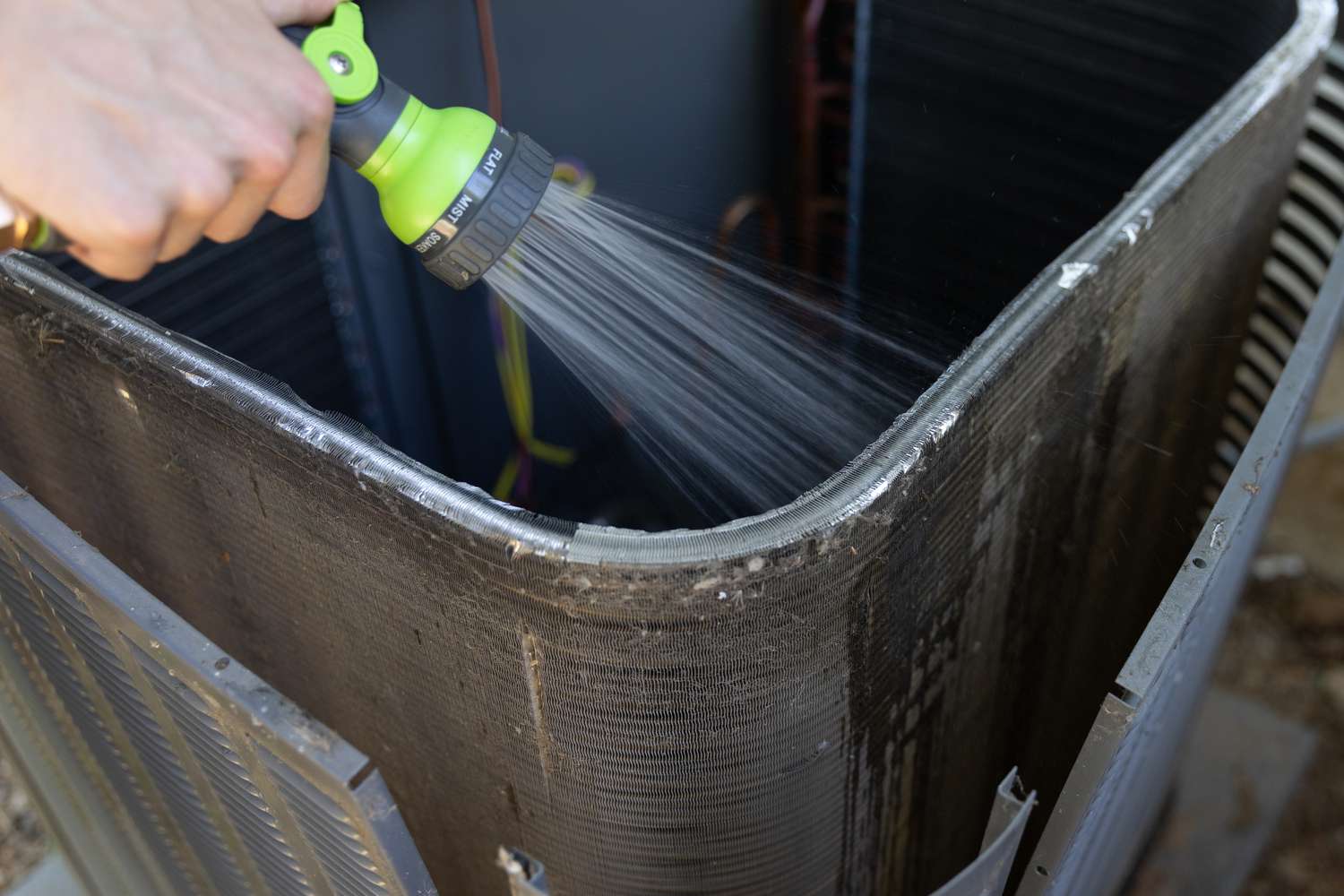

Home Maintenance
How To Clean The Condenser Coils Of An Air Conditioner
Modified: March 7, 2024
Learn how to properly clean the condenser coils of your air conditioner with this comprehensive guide on home maintenance. Enhance the lifespan and efficiency of your AC unit now!
(Many of the links in this article redirect to a specific reviewed product. Your purchase of these products through affiliate links helps to generate commission for Storables.com, at no extra cost. Learn more)
Introduction
Welcome to our comprehensive guide on how to clean the condenser coils of an air conditioner. The condenser coils play a vital role in the cooling process of your AC unit, and keeping them clean is crucial for optimal performance and energy efficiency.
Understanding how the condenser coils work and why they need regular cleaning can help you maintain your air conditioner and extend its lifespan. In this article, we will discuss the step-by-step process of cleaning the condenser coils, the tools and equipment needed, and some common mistakes to avoid.
By following our guide, you’ll be able to safely and effectively clean the condenser coils of your air conditioner, ensuring it runs smoothly and efficiently.
Key Takeaways:
- Regularly cleaning the condenser coils of your air conditioner is crucial for saving energy, improving cooling performance, and extending the lifespan of your unit. It’s a simple task with significant benefits for your home comfort.
- Prioritize safety, follow the step-by-step guide, and avoid common mistakes when cleaning your air conditioner’s condenser coils. With proper maintenance, you’ll enjoy efficient cooling and a healthier indoor environment.
Read more: How To Clean Condenser Coils On Freezer
Understanding the Condenser Coils
The condenser coils are an essential component of an air conditioner. Located in the outdoor unit, these coils play a crucial role in the cooling process. When warm air from your home is passed over the evaporator coils indoors, it absorbs heat and gets cooled down. The cooled air is then circulated back into your home. However, the heat absorbed by the evaporator coils needs to be released outside to complete the cooling cycle, and that’s where the condenser coils come into play.
The condenser coils work by releasing the heat absorbed by the evaporator coils. The warm refrigerant vapor from the evaporator coils is compressed by the air conditioner’s compressor and enters the condenser coils as a high-pressure hot gas. As the hot gas flows through the condenser coils, the surrounding air carries away the heat, causing the refrigerant to condense and turn back into a liquid form.
It’s essential to keep the condenser coils clean to ensure optimal heat transfer. Over time, dirt, debris, and grime can accumulate on the coils, forming a layer that hampers the heat exchange process. This buildup reduces the efficiency of the air conditioner, leading to increased energy consumption and decreased cooling performance.
In addition to reduced efficiency, dirty condenser coils can also put strain on other components of the air conditioner. The compressor, in particular, can be affected as it works harder to overcome the reduced heat transfer efficiency. This can lead to increased wear and tear on the compressor, potentially shortening the lifespan of your unit.
By understanding the role and importance of the condenser coils, you can appreciate why regular cleaning is necessary to maintain the performance and efficiency of your air conditioner.
Why Clean the Condenser Coils?
Cleaning the condenser coils of your air conditioner is a crucial maintenance task that should not be overlooked. Regular cleaning offers several benefits for both your AC unit and your overall home comfort:
- Improved Energy Efficiency: When the condenser coils are dirty, they become less effective at transferring heat. This means that your air conditioner has to work harder and consume more energy to achieve the same level of cooling. By keeping the coils clean, you can maximize the efficiency of your system, resulting in lower energy bills.
- Enhanced Cooling Performance: Dirty condenser coils restrict the proper airflow needed for efficient cooling. As a result, you may notice that your air conditioner struggles to cool your home adequately, leading to discomfort on hot summer days. Cleaning the coils allows for better airflow, ensuring that your AC can cool your space effectively.
- Extended Lifespan of the System: When the condenser coils are clogged with dirt and debris, the overall strain on the system increases. This can lead to premature wear and tear on various components of the air conditioner, including the compressor. By cleaning the coils regularly, you reduce the risk of unnecessary damage and prolong the lifespan of your AC unit.
- Better Indoor Air Quality: As the condenser coils become dirty, they can serve as a breeding ground for mold, bacteria, and other harmful pathogens. These contaminants can be circulated throughout your home, negatively impacting your indoor air quality and potentially causing health issues. Regular coil cleaning helps maintain a cleaner and healthier indoor environment.
Cleaning the condenser coils is a relatively simple task that can have significant benefits for your air conditioner’s performance and longevity. By dedicating time to this important maintenance step, you not only save money on energy bills but also ensure a comfortable and healthy environment within your home.
Tools and Equipment Needed
Before you begin cleaning the condenser coils of your air conditioner, it’s essential to gather the necessary tools and equipment to ensure the process goes smoothly. Here are the items you will need:
- Gloves: Protect your hands from dirt, debris, and any cleaning solutions by wearing gloves.
- Goggles or Safety Glasses: Safeguard your eyes from any potential particles or cleaning agents splashing during the cleaning process.
- Screwdriver or Nut Driver: Depending on your air conditioner unit, you may need a screwdriver or nut driver to remove the access panel to reach the condenser coils.
- Soft Brush: Use a soft brush, such as a nylon bristle brush or a coil cleaning brush, to gently remove debris and dirt from the surface of the coils without causing damage.
- Fin Comb or Fin Straightener: If the fins on your condenser coils are bent or damaged, a fin comb or fin straightener can help restore them to their original shape for better airflow.
- Coil Cleaner Solution: Purchase a coil cleaner solution that is specifically designed for cleaning air conditioner coils. This cleaner helps remove stubborn dirt and grime from the coils effectively.
- Water Source: You will need access to a water source, such as a garden hose or a bucket of water, to rinse the coils after applying the cleaning solution.
- Towels or Rags: Keep some towels or rags handy to wipe away excess water and to dry the air conditioner unit before reassembling.
Having these tools and equipment readily available will make the condenser coil cleaning process easier and more efficient. Make sure to follow the manufacturer’s instructions for any specific tools or cleaning solutions recommended for your air conditioner model.
Safety Precautions
When cleaning the condenser coils of your air conditioner, it’s important to prioritize your safety. Taking necessary precautions not only prevents accidents but also ensures a successful and stress-free cleaning process. Here are some safety measures to keep in mind:
- Turn off the Power: Before starting any maintenance on your air conditioner, make sure to turn off the power supply. This can usually be done by switching off the circuit breaker that controls the AC unit. This step is crucial to avoid any electrical shock or accidents during the cleaning process.
- Wear Protective Gear: Use gloves and safety glasses to protect your hands and eyes from any debris or cleaning solutions that may splash during cleaning.
- Secure and Stabilize the Unit: The outdoor unit of your air conditioner should be adequately secured and stabilized before attempting to clean the condenser coils. Ensure that the unit is not wobbly or unstable to prevent any accidents or damage.
- Inspect for Damage: Before cleaning, inspect the coils and other components of the air conditioner for any signs of damage or wear. If you notice any significant damage, it’s best to contact a professional technician for repair.
- Follow Manufacturer’s Instructions: Always refer to the manufacturer’s manual or instructions specific to your air conditioner model for precise cleaning guidelines and safety information.
- Avoid Harsh Chemicals: When choosing a coil cleaning solution, opt for mild and non-toxic options. Avoid using harsh chemicals that can damage the coils or pose a risk to your health. Follow the instructions on the cleaning solution carefully.
- Be Gentle: When brushing or straightening the fins, handle them gently to avoid bending or damaging them further. Use a soft touch to remove dirt and debris from the coils without causing any harm.
- Use Caution with Water: When rinsing the coils, use caution not to spray water directly into electrical components or sensitive areas of the unit. Direct the water stream away from these parts to prevent electrical hazards.
- Allow Sufficient Drying Time: After cleaning, make sure to allow the coils and the entire air conditioner unit to dry completely before turning the power back on or reassembling. This helps prevent any electrical issues or damage that may occur with moisture present.
By following these safety precautions, you can minimize the risk of accidents and ensure a safe cleaning process for your air conditioner’s condenser coils. If you are unsure or uncomfortable with any aspect of the cleaning process, it’s best to consult a professional HVAC technician for assistance.
Read more: What Is An Air Conditioner Coil
Step-by-Step Guide to Cleaning the Condenser Coils
Cleaning the condenser coils of your air conditioner is a relatively straightforward process. By following this step-by-step guide, you can effectively remove dirt, debris, and grime to restore optimal performance to your unit. Let’s get started:
- Turn off the Power: Begin by turning off the power supply to your air conditioner. This can usually be done by switching off the circuit breaker that controls the AC unit.
- Access the Condenser Coils: Locate the outdoor unit of your air conditioner and remove the access panel. This may require using a screwdriver or nut driver, depending on your specific unit. Set aside the screws or fasteners in a safe place.
- Inspect the Coils: Take a moment to inspect the condenser coils for any signs of damage or excessive dirt buildup. If you notice significant damage, it’s best to contact a professional technician for repair.
- Remove Debris: Use a soft brush, such as a nylon bristle brush, to gently remove any loose debris or dirt from the surface of the coils. Be careful not to bend or damage the fins.
- Apply Coil Cleaner: Apply a coil cleaner solution to the coils according to the manufacturer’s instructions. Make sure to use a solution specifically designed for air conditioner coils. Allow the cleaner to sit for the recommended amount of time to dissolve stubborn dirt and grime.
- Gently Brush the Coils: After the cleaner has had time to work, use the soft brush to gently scrub the coils. Start from the top and work your way down, removing any remaining dirt or buildup. Take care not to apply too much pressure to avoid damaging the coils.
- Rinse the Coils: Once the coils have been thoroughly brushed, rinse them using a gentle stream of water from a garden hose or a bucket of water. Direct the water at an angle to avoid spraying directly into electrical components or sensitive areas of the unit. Continue rinsing until the water runs clear and all the cleaner residue is removed.
- Dry the Unit: After rinsing, allow the unit to dry completely. Wipe away any excess water using towels or rags, ensuring that all components are dry before proceeding.
- Reassemble and Restore Power: Once the unit is dry, reattach the access panel using the screws or fasteners that were removed earlier. Make sure the panel is securely in place. Finally, restore power to your air conditioner by turning on the circuit breaker.
Following these steps will help you effectively clean the condenser coils of your air conditioner. Remember to take your time and be gentle during the cleaning process to avoid any damage. Regular maintenance and cleaning of the coils will ensure optimal performance and efficiency of your air conditioner.
Regularly clean the condenser coils of your air conditioner by using a soft brush or vacuum to remove dirt and debris. This will help improve the efficiency of your AC and extend its lifespan.
Cleaning the Exterior of the Air Conditioner Unit
While focusing on cleaning the condenser coils, it’s also important to pay attention to the exterior of the air conditioner unit. Keeping the exterior clean helps improve the overall appearance of the unit and ensures proper airflow. Here’s how you can clean the exterior of your air conditioner:
- Turn off the Power: As a safety precaution, ensure the power supply to your air conditioner is turned off. This can usually be done by switching off the circuit breaker.
- Remove Debris: First, remove any visible debris, such as leaves, twigs, or grass clippings, from around the unit. You can use a brush or gloved hands to gently clear away the debris.
- Clean the Exterior Surfaces: Mix a mild detergent or soap with water in a bucket. Dip a soft cloth or sponge into the soapy water and wipe down the exterior surfaces of the air conditioner. Be careful not to get water into the electrical components or vents.
- Rinse the Unit: After wiping down the exterior, rinse the unit with a gentle stream of water from a garden hose. Start from the top and work your way down, ensuring that all soapy residue is rinsed off. Make sure not to spray water directly into electrical components or vents.
- Dry the Unit: Allow the air conditioner unit to air dry completely or use towels or rags to wipe away any excess water. Ensure that all components are dry before restoring power to the unit.
- Trim Vegetation: Check for any plants or vegetation growing close to the air conditioner unit. Trim back any overgrown branches or bushes to maintain proper airflow around the unit.
- Inspect the Unit: Take a moment to inspect the exterior of the air conditioner for any signs of damage, such as cracks or loose parts. If you notice any significant issues, it’s best to contact a professional technician for repair.
- Restore Power: Once you have finished cleaning and inspecting the exterior, restore power to your air conditioner unit by turning on the circuit breaker.
By regularly cleaning the exterior of your air conditioner unit, you not only improve its appearance but also ensure that the unit can operate efficiently. Clearing away debris and maintaining proper airflow around the unit contributes to its overall performance and extends its lifespan.
Cleaning the Interior of the Air Conditioner Unit
While cleaning the condenser coils is the primary focus, it’s also important to clean the interior components of your air conditioner unit. This helps maintain its efficiency and prevents the buildup of dirt and debris. Follow these steps to clean the interior of your air conditioner:
- Turn off the Power: Ensure that the power supply to your air conditioner is turned off. This can usually be done by switching off the circuit breaker.
- Remove the Access Panel: Locate the access panel on the air conditioner unit and remove it. This may require using a screwdriver or nut driver. Set aside the screws or fasteners in a safe place.
- Inspect the Interior: Take a look inside the unit and inspect for any visible dirt, debris, or signs of mold or pest infestation. If necessary, use a flashlight to get a better view of the components.
- Remove Loose Debris: Use a soft brush or vacuum cleaner with a brush attachment to gently remove any loose dirt, dust, or debris from the interior components of the air conditioner. Be careful not to damage any delicate parts.
- Clean Condensate Drain Pan: The condensate drain pan collects moisture removed from the air during the cooling process. Check the drain pan for any standing water or debris. If needed, clean the drain pan using a mixture of mild detergent and warm water. Rinse thoroughly and wipe dry.
- Inspect and Clean the Fan Blades: Check the fan blades for any dirt, dust, or debris buildup. Use a soft cloth or brush to gently clean the fan blades, taking care not to bend or damage them.
- Clean or Replace Air Filters: If your air conditioner has reusable filters, remove them and clean them according to the manufacturer’s instructions. If the filters are disposable, replace them with new ones. Clean air filters help improve indoor air quality and maintain the efficiency of the system.
- Reassemble and Restore Power: Once you have finished cleaning the interior components, reattach the access panel using the screws or fasteners. Ensure that the panel is securely in place. Finally, restore power to your air conditioner by turning on the circuit breaker.
Regular cleaning of the interior components helps maintain the efficiency of your air conditioner and improves the quality of the air it circulates. By following these steps, you can ensure that your air conditioner remains clean and well-maintained for optimal performance.
Maintaining the Condenser Coils
Regular maintenance of the condenser coils is essential to keep your air conditioner running efficiently. By incorporating a few simple habits into your routine, you can prolong the lifespan of your unit and ensure optimal cooling performance. Here are some tips for maintaining the condenser coils:
- Keep the Surrounding Area Clean: Regularly remove leaves, grass, dirt, and other debris that may accumulate around the outdoor unit. This prevents debris from entering the coils and obstructing airflow.
- Trim Vegetation: Trim any nearby plants or vegetation to maintain proper clearance around the unit. Overgrown vegetation can hinder airflow and cause the coils to collect more dirt and debris.
- Clean or Replace Filters: Clean or replace air filters regularly, as dirty filters can restrict airflow and result in the buildup of dirt on the condenser coils.
- Inspect the Coils Annually: Conduct an annual inspection of the condenser coils to identify any damage, corrosion, or signs of excessive dirt buildup. Address any issues promptly to prevent further damage.
- Consider Professional Maintenance: Hire a professional HVAC technician for routine maintenance, including coil cleaning and overall system inspection. Professionals have the expertise and equipment to properly clean and maintain the condenser coils.
- Use a Coil Protectant: Consider applying a specialized coil protectant or coating to the condenser coils. These products help repel dirt and improve the coils’ resistance to corrosion.
- Follow Maintenance Guidelines: Refer to your air conditioner’s manufacturer guidelines to determine the recommended maintenance schedule and practices for your specific unit.
- Monitor Efficiency and Cooling Performance: Keep an eye on your air conditioner’s efficiency and cooling performance. If you notice a decrease in performance, high energy consumption, or uneven cooling, it may indicate a need for coil cleaning or maintenance.
By following these maintenance tips, you can ensure that the condenser coils of your air conditioner remain in excellent condition, leading to improved energy efficiency, extended system lifespan, and consistent cooling performance.
Read more: What Is An Air Conditioner Condenser
Common Mistakes to Avoid
While cleaning and maintaining the condenser coils of your air conditioner, it’s important to be aware of common mistakes that can potentially damage the unit or compromise its performance. By avoiding these mistakes, you can ensure a successful cleaning process and the longevity of your air conditioner. Here are some common mistakes to avoid:
- Using Harsh Cleaning Solutions: Avoid using harsh chemicals or abrasive cleaners on the condenser coils. These can damage the coils or other components of the unit. Stick to mild, coil-specific cleaning solutions recommended by the manufacturer.
- Applying Excessive Pressure: When brushing or straightening the fins, be gentle to avoid bending or damaging them. Applying excessive pressure can restrict airflow and reduce the efficiency of the air conditioner.
- Neglecting Safety Precautions: Always prioritize safety when working with your air conditioner. Turn off the power supply, wear protective gear, and follow safety guidelines outlined in the manufacturer’s manual.
- Skipping Regular Maintenance: Neglecting regular maintenance, including cleaning the coils, can lead to decreased efficiency, higher energy consumption, and potential system breakdowns. Stick to a maintenance schedule to ensure optimal performance.
- Cleaning in the Wrong Direction: When rinsing the coils, make sure to direct the water stream from top to bottom. Cleaning against the natural airflow can push debris further into the coils, making it harder to remove.
- Overlooking the Surrounding Area: Keep the area surrounding the outdoor unit clean and clear of debris. Neglecting this can lead to faster dirt accumulation on the condenser coils, reducing their efficiency and overall system performance.
- Ignoring Professional Maintenance: While DIY cleaning is important, it’s also essential to enlist the help of a professional HVAC technician for routine maintenance. Professionals can identify and address any underlying issues, ensuring proper coil cleaning and system performance.
- Delaying Necessary Repairs: If you notice any signs of damage or malfunctioning components, don’t delay repairs. Ignoring these issues can lead to further damage and result in costly repairs or system failure.
By avoiding these common mistakes, you can effectively clean and maintain the condenser coils of your air conditioner without causing any harm to the unit. Consistent and proper maintenance will help your air conditioner operate efficiently and provide reliable cooling performance for years to come.
Conclusion
Cleaning the condenser coils of your air conditioner is a vital maintenance task that should not be overlooked. By understanding the purpose of the condenser coils and the importance of keeping them clean, you can ensure optimal cooling performance, energy efficiency, and system longevity.
Throughout this comprehensive guide, we have provided a step-by-step process for cleaning the condenser coils, highlighted the tools and equipment needed, discussed important safety precautions, and offered tips for maintaining the coils. We have also outlined common mistakes to avoid to ensure a successful cleaning process.
Regularly cleaning the condenser coils and maintaining your air conditioner not only helps you save on energy costs but also enhances your overall home comfort. A clean and efficient air conditioner can cool your space effectively, improve indoor air quality, and extend the lifespan of the system.
Remember, it’s important to adhere to safety guidelines, follow the manufacturer’s instructions, and consider professional maintenance when necessary. By taking care of your air conditioner and giving proper attention to the condenser coils, you can enjoy the benefits of a well-functioning and energy-efficient cooling system for years to come.
So go ahead, roll up your sleeves, and keep those condenser coils in top shape. Your air conditioner will thank you with cool, efficient, and comfortable air, allowing you to enjoy the comforts of your home even on the hottest summer days.
Frequently Asked Questions about How To Clean The Condenser Coils Of An Air Conditioner
Was this page helpful?
At Storables.com, we guarantee accurate and reliable information. Our content, validated by Expert Board Contributors, is crafted following stringent Editorial Policies. We're committed to providing you with well-researched, expert-backed insights for all your informational needs.
